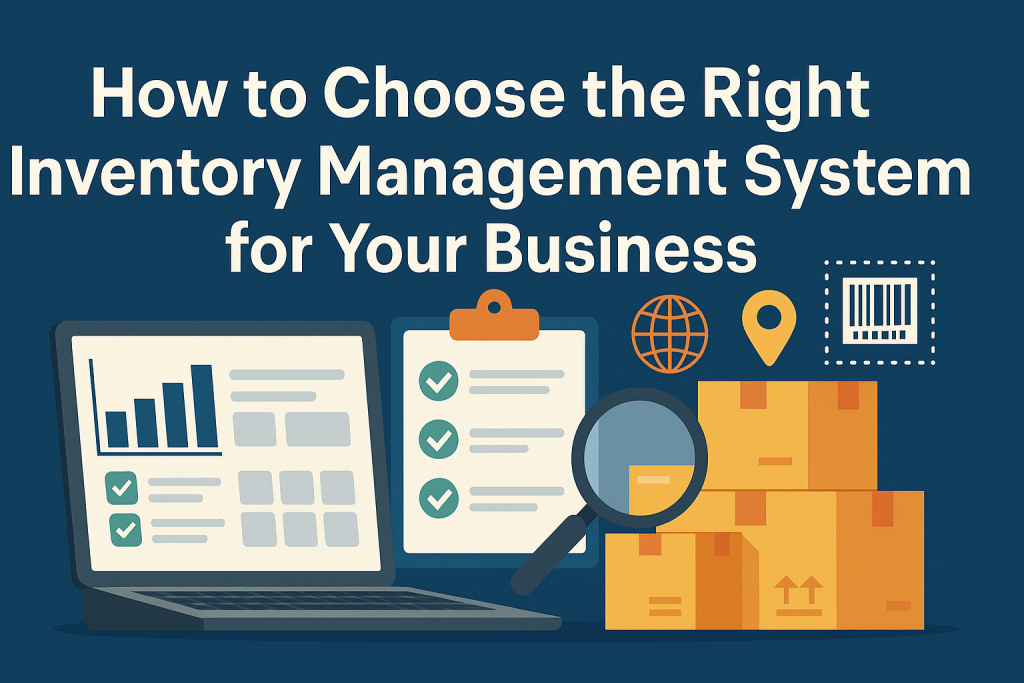
Stock control shapes the success of every growing enterprise. Whether you run a retail outlet, warehouse, or distribution hub, relying on spreadsheets or memory invites chaos. Delays creep into an order slip. Customers walk.
To tackle these challenges, firms embrace the right inventory management system. A smart, tailored solution allows you to handle stock with confidence, speed, and clarity.
This guide unpacks everything you must know before picking the perfect inventory management system. We’ll explore tools, tips, features, and questions to steer your choice.
What Does an Inventory Management System Do?
A system tracks goods, sales, orders, and delivery flows from start to finish. It gives you a bird’s-eye view of your stockpile: where each item sits, how quickly it moves, and when to replenish.
The right system equips your team to:
- Slash waste
- Prevent lost sales
- Forecast stock needs
- Shrink storage costs
- Serve customers faster
Instead of guessing or scanning spreadsheets, you’ll gain real-time control and insight.
Why Every Business Needs the Right Inventory Management System
Without a strong stock system, businesses fumble. Stock vanishes. Orders lag. Staff guess instead of acting.
But with the right inventory management system, companies sharpen their performance. They deliver faster, reduce overstock, and tame costs.
Here’s what a high-quality inventory management system software helps you do:
- Pinpoint exact stock levels at all times
- Monitor which products sell and which stalls.
- Sync data across departments
- Prevent costly delays or errors.
- Plan reorders with precision.
Stock control isn’t just logistics. It’s about strategy. With the right system, you run lean, smart, and smooth.
Features to Demand in Your Inventory Management System
Not all systems hit the mark. Some offer flash but miss function. Others look basic but run like clockwork.
Let’s explore which features you should prioritise.
Real-Time Inventory Syncing
Choose a system that updates your stock data the moment someone scans, sells, ships, or returns an item.
Real-time sync lets you:
- React fast to sudden demand
- Avoid double-selling
- Keep every team member aligned.
Without this, your staff rely on guesswork and outdated numbers.
Barcode and QR Code Scanning
Your inventory management system must support barcode or QR scanning.
This feature lets your team:
- Record stock movement in seconds
- Cut human error
- Move goods faster through your process.
Scanning replaces manual typing. It boosts speed tenfold and increases trust in your data.
Integration With Existing Tools
Your stock system shouldn’t live alone. It must talk to other software—accounting tools, eCommerce shops, POS systems, CRM platforms.
These links let you:
- Unify records across departments
- Avoid duplication
- Spot issues before they snowball
If your system can’t link up, it may become a bottleneck.
User-Friendly Dashboard
Your team needs fast answers, not clutter. Pick an inventory management system with a clean, visual dashboard.
- Colour-coded alerts
- Graphs of best-selling items
- Fast search by product name or code
A good dashboard reduces training time and improves day-to-day efficiency.
Smart Reporting and Analytics
Every business must understand how stock moves. Choose inventory management system software that pulls reports without fuss.
Useful reports include:
- Sell-through rates
- Stock ageing
- Inventory turnover ratio
- Reorder triggers
Smart systems don’t just show numbers—they surface insights.
Ask These Questions Before You Choose
Even the best tools won’t help if they don’t fit your needs. Before signing up, explore these critical questions.
What’s Your Biggest Stock Challenge?
Begin with your pain points. Are you overstocking? Running out of fast sellers? Losing items in the warehouse?
List your top three struggles. Use them to filter out options that don’t solve real problems.
Who Will Use the System?
Different roles need different access. Will your warehouse team scan items? Will your sales reps view stock remotely?
Count your users. Then find a system that supports them, without blowing your budget on licences.
What Type of Goods Do You Manage?
Goods vary. Fresh food expires. Fashion needs size and colour filters. Electronics require serial tracking.
Ensure your system matches your stock type, whether simple or complex.
How Fast Will You Grow?
Growth creates strain. A small setup that runs fine with 500 SKUs may collapse at 5,000.
Seek a scalable solution—one that expands with your product list, locations, and teams.
What’s Your Budget?
Costs vary. Some platforms charge monthly. Others bill per user, feature, or warehouse.
Balance price with support and value. Avoid “cheap” tools that lock you out of key features when you need them most.
Scalability: The Hidden Deal-Breaker
You may start small. But what if your shop grows to a chain of outlets? Or your product list triples?
A scalable inventory management system flexes as your needs expand. It supports more users, more warehouses, and more sales channels—without forcing you to switch platforms.
Look for:
- Custom roles and permissions
- Multi-warehouse tracking
- Unlimited SKUs
- API support
Never trap your business with a system that blocks growth.
Strong Support Is Not Optional
When issues strike, delays cost you. Choose a vendor who answers fast, speaks your language, and solves problems without excuses.
Test support before you commit. Ask:
- Do they offer 24/7 help?
- Is there live chat, phone, and email?
- How fast do they respond to queries?
- Do they charge for support?
Poor support breaks trust. Great support builds it.
Don’t Skip the Trial Period
Most top-tier platforms offer a trial. Use it well. Invite your warehouse staff, sales team, and managers to explore the platform.
During the trial, test:
- How fast can you add products
- How scanning works
- How clean and fast the dashboard feels
- How does it integrate with your other systems?
Common Mistakes to Avoid
Avoid these traps when picking your system:
- Falling for flashy extras that you never use
- Ignoring training needs—simple systems still need setup time.
. - Choosing based on price only—cheap upfront often means higher long-term costs.
- Overlooking user roles—not everyone should see everything.g
- Skipping support checks—you’ll regret it when things go wrong.
Your Inventory Management System Must Have
- Offer real-time syncing
- Support barcode/QR scanning
- Display clean dashboards
- Scale with your growth
Final Thoughts
A smart, well-built inventory management system puts you in command. It powers faster sales, tighter control, and fewer mistakes. It frees your team to work smarter, not harder.
Use this guide to shape your checklist. Weigh your needs, test your options, and dig into what truly fits. Avoid the noise. Pick the system that sharpens your edge and supports long-term growth.With the right inventory management system software, you turn stock chaos into clarity—and transform every shelf, bin, and barcode into profit.







